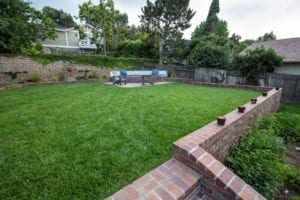A lush green lawn has long been a symbol of tranquility and natural beauty. However, maintaining a natural lawn requires considerable effort, time, and resources. In recent years, an alternative has gained significant popularity – artificial turf. Also known as synthetic grass, artificial turf offers numerous benefits that make it a compelling option for both front and backyard landscapes.
Below are six key advantages of using turf in both the front and backyard:
1. Low Maintenance Requirements
Natural grass demands regular maintenance, including watering, mowing, and fertilizing, to maintain its vibrant appearance. In contrast, artificial turf requires minimal upkeep. Once installed, it doesn’t need watering, mowing, or fertilizing. This translates to substantial time and cost savings for homeowners. Without the need for constant upkeep, property owners can devote their energy to other essential tasks while enjoying the perpetually green and manicured look of artificial grass.
2. Durability and Longevity
High-quality artificial turf is designed to withstand heavy foot traffic and various weather conditions. It remains resilient even in the face of extreme heat, freezing temperatures, or heavy rainfall. With proper installation and maintenance, synthetic grass can last for many years without losing its vibrant color and texture. This durability makes it an excellent long-term investment for homeowners looking to create a visually appealing and functional outdoor space.
3. Consistent Aesthetic Appeal
Unlike natural grass, which can develop uneven patches or discoloration over time, artificial turf maintains a uniform and pristine appearance throughout the year. Its consistent color, texture, and height create an immaculate and visually appealing landscape. Homeowners can enjoy a vibrant green lawn regardless of the season, without worrying about bald spots, weeds, or other imperfections commonly associated with natural grass.
4. Water Conservation
One of the most significant benefits of using artificial turf is its contribution to water conservation efforts. Natural lawns require substantial amounts of water to remain healthy and vibrant, especially during dry seasons. By opting for synthetic grass, homeowners can significantly reduce their water consumption, leading to cost savings and a more environmentally sustainable lifestyle. This eco-friendly aspect of artificial turf has become increasingly attractive to environmentally conscious individuals seeking to minimize their ecological footprint.
5. Allergy and Pesticide-Free Environment
For individuals with allergies or sensitivities to pollen, artificial turf provides a welcome alternative to natural grass, which can trigger allergic reactions. Additionally, synthetic grass eliminates the need for pesticides and other harmful chemicals commonly used to maintain natural lawns. By choosing artificial turf, homeowners can create a safer and healthier outdoor environment for their families and pets, free from the potential health risks associated with pesticide exposure and allergens.
6. Versatile Application
Artificial turf offers a versatile solution for various landscaping needs. Whether used in the front yard, backyard, or even on rooftops, synthetic grass can transform any space into a visually appealing and functional area. It can be customized to fit different landscape designs, allowing homeowners to create unique and inviting outdoor spaces that reflect their personal style and preferences. From recreational areas and playgrounds to pet-friendly spaces and outdoor entertaining areas, artificial turf provides a flexible and durable solution for diverse landscaping requirements.

In conclusion, the use of artificial turf in both the front and backyard offers a multitude of benefits that go beyond aesthetic appeal. From its low maintenance requirements and durability to its water-saving capabilities and versatility, synthetic grass provides homeowners with a practical and sustainable landscaping solution. By embracing the advantages of artificial turf, homeowners can create beautiful outdoor spaces that require minimal upkeep while enjoying a vibrant, allergy-free, and eco-friendly environment year-round.
To know more ideas, check out How to Design a Low-Maintenance Garden.



